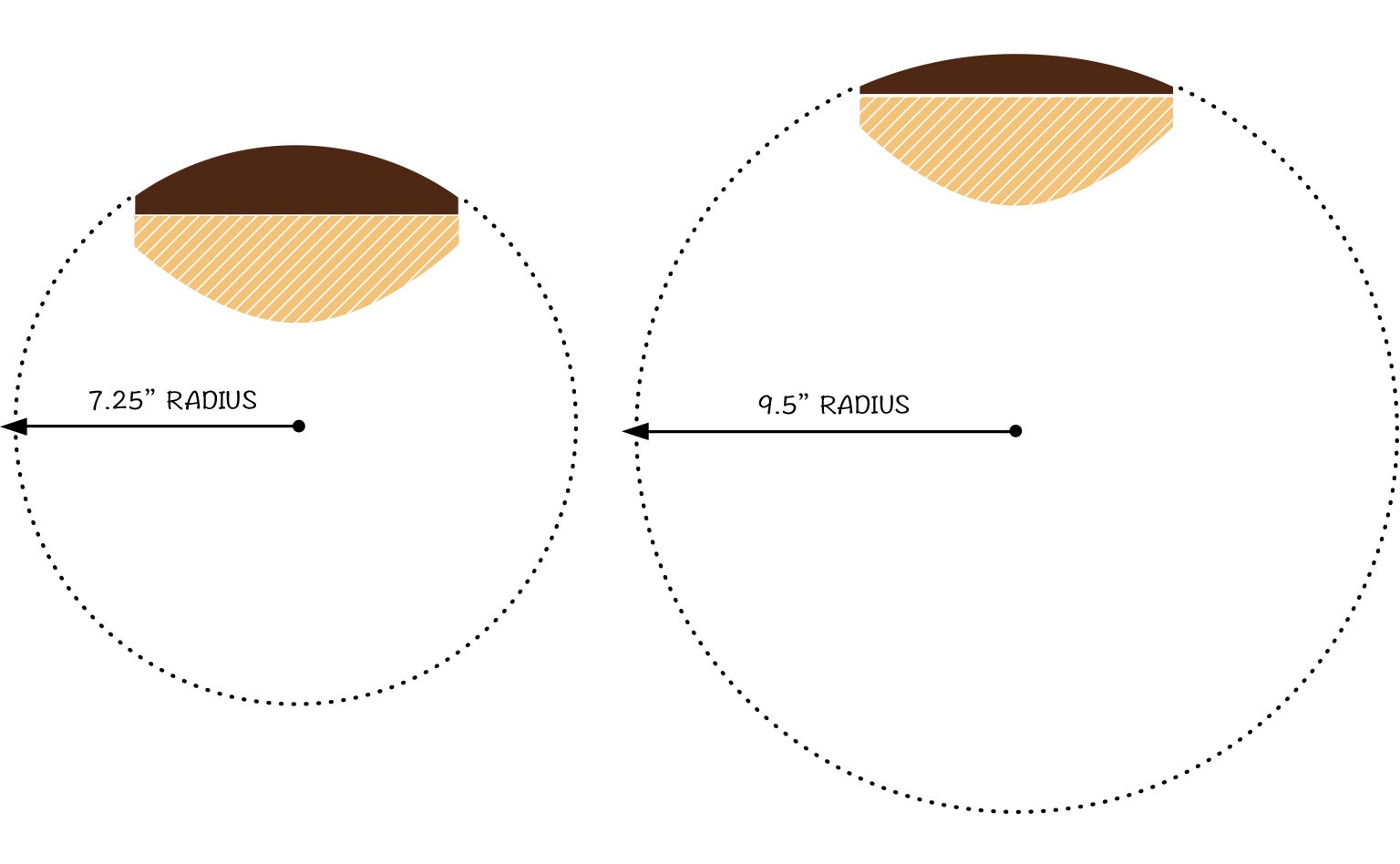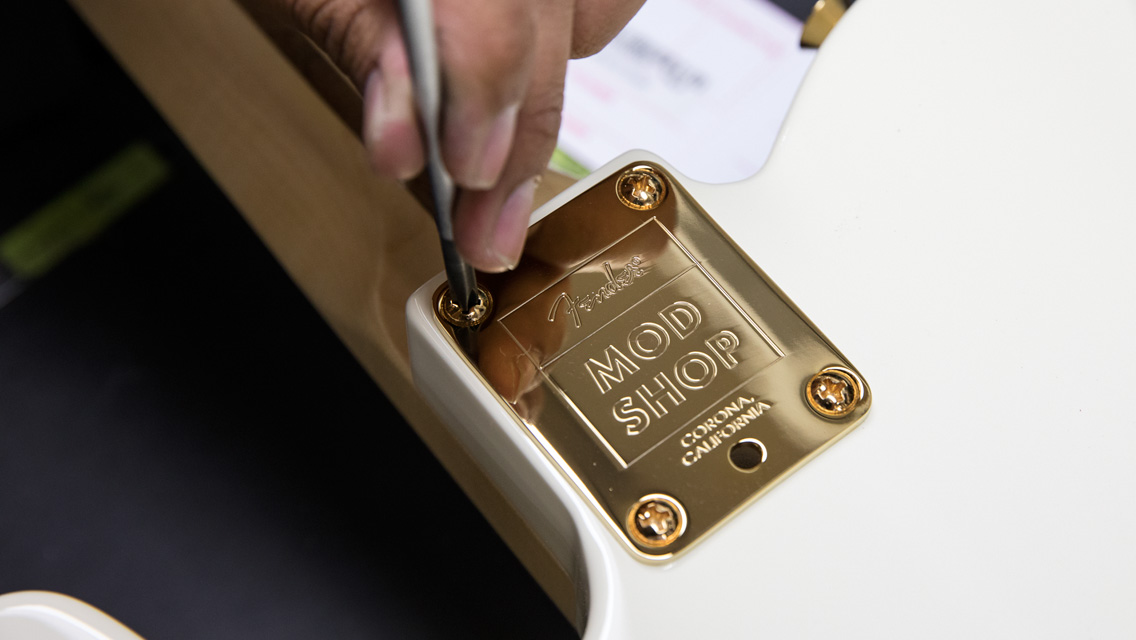
When you’re shopping for a guitar or bass, one of the dimensions you’ll be presented with is an instrument’s fingerboard radius. What is that? How is it measured, and why is it important?
The fingerboard radius is the measure of the arc of the fingerboard across its width. You don’t have to look too closely at most electric guitar and bass fingerboards to see that few if any of them are truly flat; most of them have a slight convex curvature across their width. The fingerboard radius is the measure of that curvature.
Other types of stringed instruments don’t have these “radiused” fingerboards. Most classical guitars, resonator guitars, banjos, pedal steel guitars and some steel-string acoustic guitars, for example, have flat fingerboards.
Looking for a beginner guitar? Our interactive gear guide, FindYour.Fender.com, matches you with the perfect model by learning about your sound & style. You’ll be well on your way to finding the right guitar for you.

The fingerboard radius measurement itself refers to the radius of a circle from which a small segment of the circumference equal to the width of the fingerboard is taken. The radius of the circle hence determines the amount of the fingerboard’s curvature (see diagram below). For example, if you take a circle with a 9.5” radius and remove a line segment from its circumference equal to the width of the fingerboard, you then have a 9.5” fingerboard radius (a common modern Fender spec).
If you take the same fingerboard width from the circumference of a circle with a larger radius, you now have a slightly flatter fingerboard radius. For example, a circle with a 12” radius yields a 12” fingerboard radius, which is slightly flatter than a 9.5” radius on a fingerboard of the same width. The lower the measurement, the greater the curvature, and vice versa.
If all this sounds like a scary flashback to high school geometry class, these calculations do serve a serious purpose. Fingerboard radius is an important spec because it impacts playability. It’s a subjective measurement—there is no right or wrong degree, but there are several established conventions that players can choose among to suit their personal preferences. A smaller (more curved) radius is generally perceived as more comfortable for playing chords; a larger (less curved) radius is generally considered better for single-note playing and bending.
Fender has a few of its own well-established fingerboard radius conventions. These have evolved over the years, and a few different ones are available today that reflect various player preferences, such as vintage authenticity, modern playability and even specialized compound-radius designs in which the amount of curvature changes along the length of the fingerboard.
Today, most Fender electric instruments use one of two main fingerboard radius measurements. Most prevalent is the modern 9.5” radius (241mm), which was adopted in the 1980s and is now found on about two thirds of Fender electric instruments.
The next most common fingerboard radius, 7.25” (184mm), is a vintage-era spec now used on just under a third of Fender electric instruments. The 7.25” fingerboard radius originated in the early 1950s, and was used for most Fender electric instruments until the 1980s. It never really went away completely, but its prevalence was superseded in the modern era by the slightly more flattened 9.5” radius.

Diagram illustrating the concept of fingerboard radius. Both neck/fingerboards seen here in cross section are of the same width; note that the smaller vintage-style 7.25″ radius on the left yields greater fingerboard curvature than the longer modern 9.5″ radius on the right.
Other fingerboard radii are seen on current Fender electric instruments far less often. As of summer 2014, a dozen or so modern Fender instruments have a more flattened 12” (305mm) fingerboard radius--and a single model, the Special Edition series Custom Telecaster FMT HH, has an even more flattened 15.75” (400mm) radius.
About three dozen currently available Fender electric instruments feature a compound-radius fingerboard in which the degree of curvature gradually changes along the length of the neck, with the arc greatest near the headstock and gradually (but not completely) flattening toward the body end of the fingerboard. Such a fingerboard, for example, may have a 9.5” radius at the headstock end and a 14” radius at the body end; other compound-radius designs used by Fender include 7.25”-12” and 12”-16”. The advantage of a compound-radius fingerboard is that some guitarists find the more rounded radius near the headstock preferable for chording and the more flattened radius near the body preferable for soloing.
The height of the strings above the fingerboard (or the action) is typically set at the bridge to match the curvature of the fingerboard radius more or less exactly, although players can easily adjust individual string height to personal preference. On instruments with compound-radius fingerboards, string height is typically set to match the fingerboard radius basically in the middle of the scale length; i.e., at or near the 12th fret.
Don’t miss out!
Be the first to know about new products, featured content, exclusive offers and giveaways.


